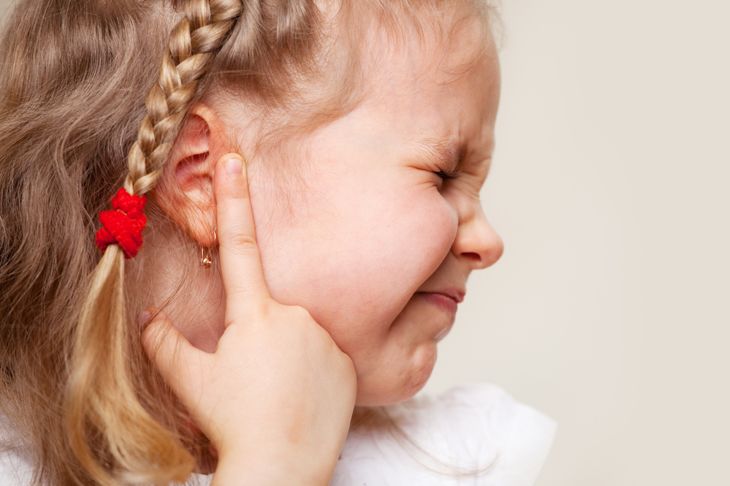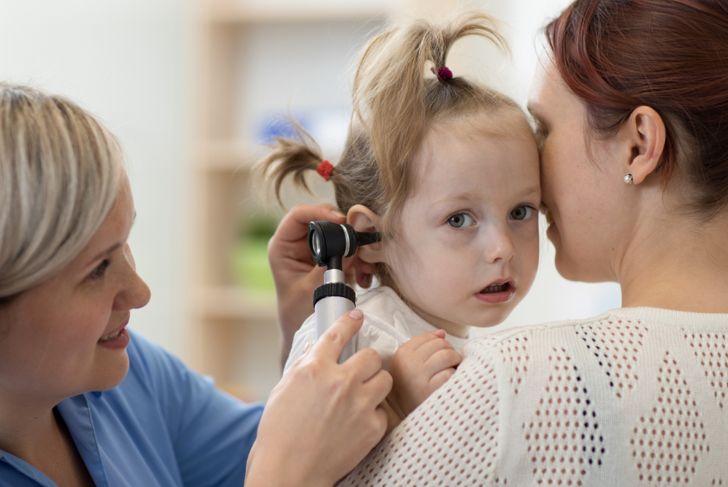Bullous myringitis is similar to a middle ear infection and often occurs alongside a cold or other upper respiratory infection. The condition is relatively common, and early recognition and treatment are essential to prevent complications and provide relief. Adults can get bullous myringitis, but it is more common in children.
Causes
The most common cause of bullous myringitis is an infection caused by viruses like the respiratory syncytial virus (RSV) or influenza, or bacteria like Streptococcus pneumonia or mycoplasma pneumonia. Infectious agents are not the only causes, though. It’s uncommon, but chemical irritation and fungi can also cause bullous myringitis.
Bullous Myringitis vs Acute Otitis Media
Bullous myringitis is similar to acute otitis media, but it causes blisters on the tympanic membrane or eardrum, while acute otitis media is an infection in the space behind the eardrum, in the middle ear. The same infectious agents can cause both of these conditions, and they can both result from the spread of common respiratory infections. Bullous myringitis is more common in children between two and eight, while acute otitis media is more common in children under two.
Risks
Cases of bullous myringitis peak in the winter months. In toddlers and young children, males are more likely to develop the condition, but as children age and become teenagers, it affects females more. While acute otitis media is more prominent in children of all ages, one study shows that about 5.7 percent of children under two with acute otitis media also have bullous myringitis.
Pain
The most significant symptom of bullous myringitis is ear pain. The throbbing pain comes on quickly, and children with the condition describe it as being more severe than the pain of acute otitis media. Bullous myringitis pain can radiate into the back of the head but rarely affects the face. Pain with chewing or swallowing can also occur.
Blisters and Other Symptoms
The second classic sign of bullous myringitis is blisters on the eardrum. A child with the condition may experience temporary hearing loss, as sound waves cannot pass through the infected eardrum. About half of people with bullous myringitis experience hearing changes. Fever and ear pain are more common in bullous myringitis than in acute otitis media.
Diagnosis
Diagnosis centers on viewing the blisters on the eardrum. The doctor uses an otoscope to see the eardrum and ear canal. In addition to blistering, an eardrum with a bullous myringitis infection may also appear red, thick, and firm. Little to no light can pass through the infected eardrum.
Testing
Diagnostic testing for bullous myringitis is not usually necessary, but some cases do require it. For example, infants under a month old with a fever and bullous myringitis require a full workup to determine if there are any underlying congenital conditions. Imaging, like a CT or MRI, is only used to evaluate complications, like a brain abscess or meningitis.
Treatment
Treatment for bullous myringitis is often slightly more aggressive than treatment for acute otitis media. While doctors may take a wait-and-see approach with acute otitis media, bullous myringitis requires antibiotics — in bacterial cases — and close monitoring. Depending on the severity of the infection, antibiotics are either taken by mouth or with ear drops. Pain is also treated more aggressively, as it is significantly worse in bullous myringitis. Patients may need prescription-strength pain medication, and in some cases, small incisions are made in the blisters to drain them and relieve pain.
Complications
Complications of bullous myringitis are similar to those of acute otitis media, with the most common one being long-term hearing loss. Though rare, bullous myringitis can result in life-threatening complications, including meningitis, brain abscess, muscle weakness, cellulitis behind the ears, and inflammation of the inner ear. In most cases where significant complications develop, the cause is streptococcus pneumonia, a bacterium that is resistant to some common antibiotics
Prognosis
In cases without complications, bullous myringitis has a good outcome. Hearing usually comes back once the infection has cleared. Most people experience pain relief after about three days, and ear drainage typically resolves after around five days. If the inner ear is involved, complete healing can take up to five weeks.

 Home
Home Health
Health Diet & Nutrition
Diet & Nutrition Living Well
Living Well More
More




















